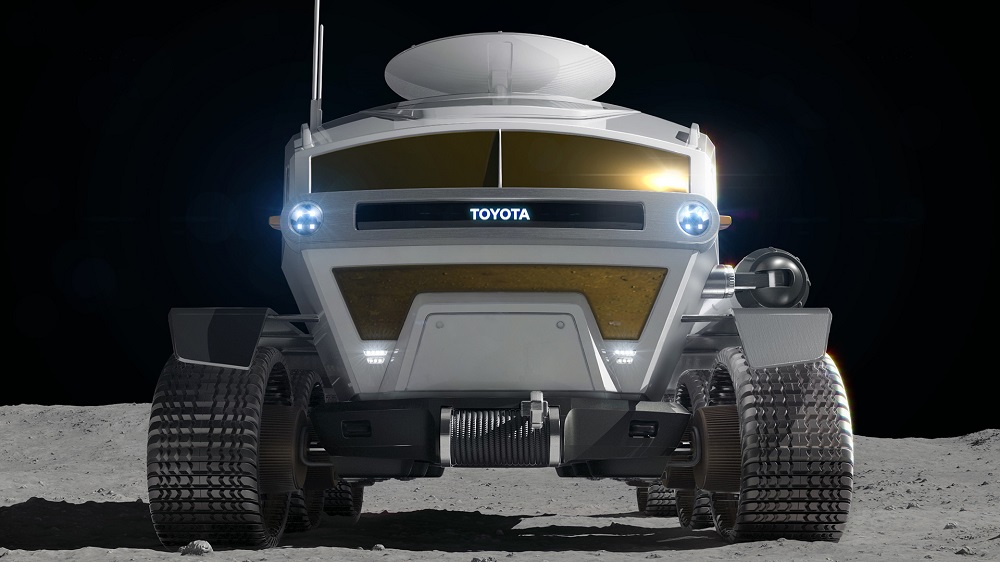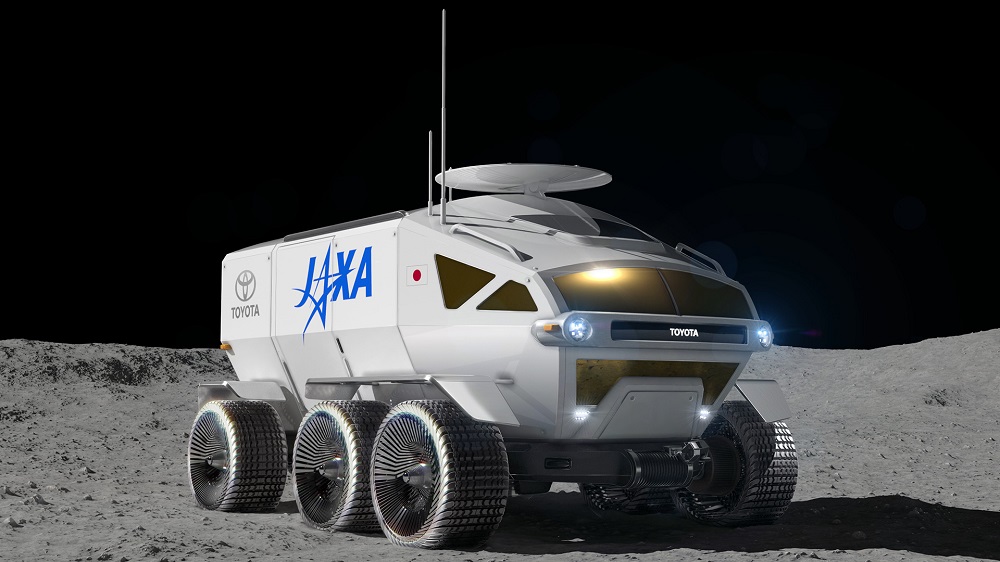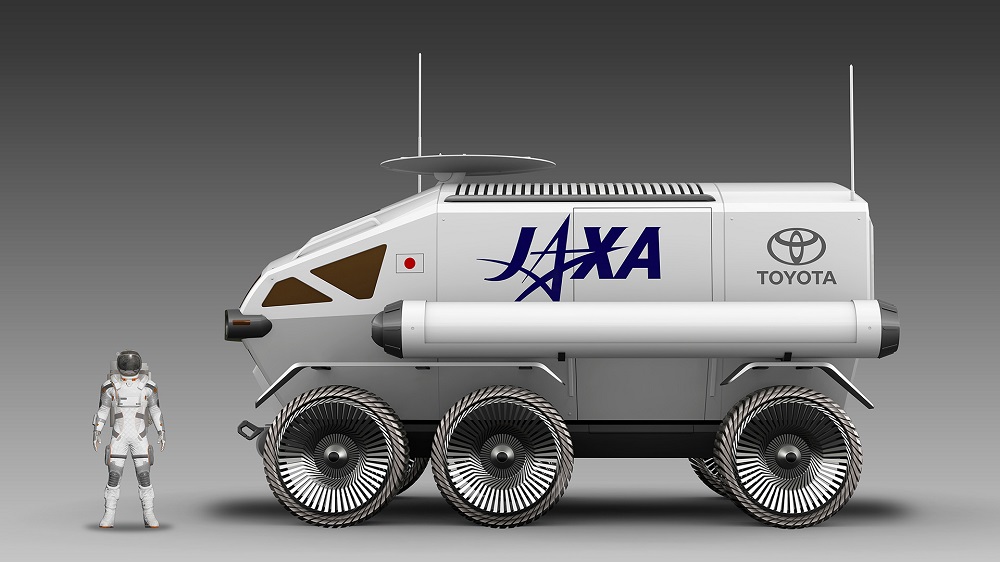Toyota Aiming to Make Future Lunar Mobility a Reality

JAXA and Toyota reach agreement on consideration toward international space exploration.
The Japan Aerospace Exploration Agency (JAXA) and Toyota have announced their agreement today to consider the possibility of collaborating on international space exploration. As a first step, JAXA and Toyota have reached agreement to further cooperate on and accelerate their ongoing joint study*1 of a manned, pressurized rover*2 that employs fuel cell electric vehicle technologies. Such a form of mobility is deemed necessary for human exploration activities on the lunar surface. Even with the limited amount of energy that can be transported to the moon, the pressurized rover would have a total lunar-surface cruising range of more than 10,000 km.
International space exploration, aiming to achieve sustainable prosperity for all of humankind by expanding the domain of human activity and giving rise to intellectual properties, has its sights set on the moon and Mars. To achieve the goals of such exploration, coordination between robotic missions, such as the recent successful touchdown by the asteroid probe Hayabusa2 on the asteroid Ryugu, and human missions, such as those involving humans using pressurized rovers to conduct activities on the moon, is essential. When it comes to challenging missions such as lunar or Martian exploration, various countries are competing in advancing their technologies, while also advancing their cooperative efforts.

“At JAXA, we are pursuing international coordination and technological studies toward Japan’s participation in international space exploration,” said JAXA President Hiroshi Yamakawa. “We aim to contribute through leading Japanese technologies that can potentially generate spin-off benefits. Having Toyota join us in the challenge of international space exploration greatly strengthens our confidence. Manned rovers with pressurized cabins are an element that will play an important role in full-fledged exploration and use of the lunar surface. For this, we would like to concentrate our country’s technological abilities and conduct technological studies. Through our joint studies going forward, we would like to put to use Toyota’s excellent technological abilities related to mobility, and we look forward to the acceleration of our technological studies for the realization of a manned, pressurized rover.”

“The automotive industry has long done business with the concepts of ‘hometown’ and ‘home country’ largely in mind,” added Toyota President Akio Toyoda. “However, from now on, in responding to such matters as environmental issues of global scale, the concept of ‘home planet’, from which all of us come, will become a very important concept. Going beyond the frameworks of countries or regions, I believe that our industry, which is constantly thinking about the role it should fulfill, shares the same aspirations of international space exploration. Furthermore, cars are used in all of Earth’s regions, and, in some regions, cars play active roles as partners for making sure that people come back alive. And I think that coming back alive is exactly what is needed in this project. I am extremely happy that, for this project, expectations have been placed on the thus-far developed durability and driving performance of Toyota vehicles and on our fuel cell environmental technologies.”
